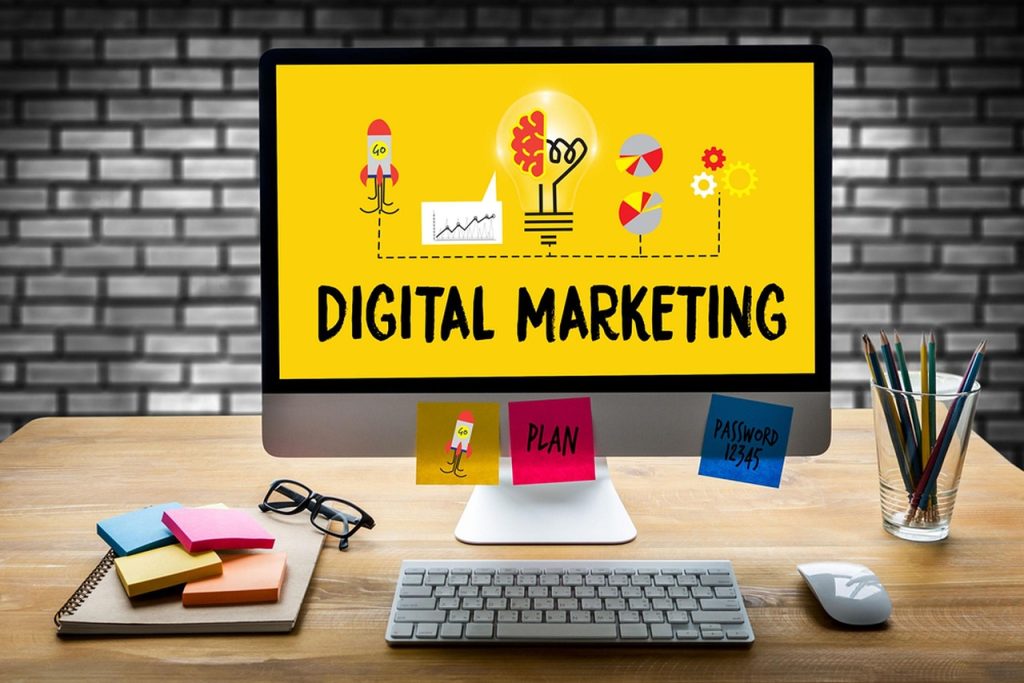
Becoming a Successful Female Entrepreneur: A Startup Guide & Advice
Do you have what it takes to become a female entrepreneur?
How can you succeed despite the challenges faced by female entrepreneurs?
And what is women entrepreneurship, really?
Here we’ll dive into all of that and touch on many other concerns related to women entrepreneurship. Better yet, you’ll learn how to transform your idea into reality and overcome the hurdles like the real lioness you are.
First things first, you’ll need a business…
How to choose the right business for you
If you have a burning desire to become a female entrepreneur, then you’ll need to lay the crucial foundations; decide what the business will be in the first place. It’s a basic requirement but it certainly is no easy feat! There are more business ideas for women out there than the stars in the Milky Way, so you’ll need to consider a number of questions before choosing your star – the industry and business to work in.
Questions to ask yourself when choosing a business:
- What are your skills?
- How will you turn your skills into a business model?
- Is there a viable niche in the market?
- Can you afford to start a business?
1. What are your skills?
Whatever your skills are, you’ll need to be able to apply them with 100% energy and focus for years to come. If that’s going to be a difficult endeavor for you to take on, then you’re going to find it quite the struggle turning your passion or interest into a successful business model. If you make the mistake of starting a business in an industry that you have no expertise in, you’ll be fighting an uphill battle. Don’t make it difficult on yourself!
You’ve probably heard the phrase that ‘if you do what you love, you’ll never work a day in your life’. It’s a little corny, but if you’re lucky enough to be able to make that happen, then you’ll avoid one of the biggest problems of women entrepreneur journeys.
2. Will your idea remain relevant?
If you want to become a female entrepreneur and keep your business open for the long-term, you’ll need to find a way to develop a strategy that will keep you going for years to come.
Does the industry you’re looking to enter have a strong growth rate, or is it barely expanding from one year to the next? Will labor shortages make it more difficult for you to grow the business later on down the line? Are the main competitors so well-established that you’ll struggle to even get your foot in the door?
It can be easy to get caught up in an exciting moment when it seems like a certain industry is experiencing a gold rush, but we all know what happens when that flood of wealth dries up. Don’t jump at opportunities to make a quick buck – if you play your cards right, you’ll be around long enough to learn about (and overcome) all of the challenges faced by female entrepreneurs!
3. Is there a viable niche in the market?
You’ve defined your skillset and you’ve chosen an industry that will last. Now you must explore if your product or service is relevant to a large enough target audience for you to earn a profit.
Ask yourself the following questions:
- Where can you aim your efforts so you can meet a demand?
- If you’re meeting a demand, are you also able to leave a strong and lasting impression so customers remember you?
- How can you ensure that you’ll outcompete existing and future competitors – what sets you apart?
- Is the interest in your product or service just a fleeting trend of very few people that will pass after a short time – or is it likely that you’ll be able to keep your position in the industry for the foreseeable future?
Women in entrepreneurship know that finding a niche to fill can be difficult, but they know that it’s also necessary. This step on the route to become a female entrepreneur is important not only to stay competitive with male entrepreneurs but also to compete with big corporations more generally.
A successful start in a niche within a market will help you avoid some of the more frequently-encountered problems of women entrepreneurs.
4. Can you afford to start a business?
Although this question comes last on our list, it remains of the utmost importance when considering whether or not to become a female entrepreneur. You may have the strongest skill set, the best business plan, and have the most promising niche market in your sights. But if you don’t have the funds at hand to put all of it into action, your amazing idea of entering women entrepreneurship will remain just that, an idea.
Before you begin investing the money you have at hand into a fledgling business, you should calculate how much money you’ll need in order to evolve from that first phase of women entrepreneurship into an established company. There are plenty of problems that women entrepreneurs encounter, but if this one is not tended to first then there’s no real point in finding solutions to the others.
It takes money to make money – that rings true for women entrepreneurship as well!

How to get your woman-owned business started!
This is where it gets really interesting. You’ve got an idea, you’ve done your research and your ready and raring to put it into action.
Success in women entrepreneurship isn’t likely to be reached by diving blindly into a rough idea of how to run a business. Do you want to be successful? Of course you do! So take some time to plan your business with careful attention and you’ll make a real difference.
8 steps to take before putting your business plan into action:
- Finding a target audience
- Planning your finances
- Picking a name for your business
- Acquiring licenses & permits
- Choosing a location
- Building a team
- Developing a marketing strategy
- Establishing a pricing strategy
1. Finding a target audience
For your dream of women entrepreneurship to become a reality, you’ll need customers to buy your products or services. The truth is, not everybody will want what you’re selling, and that’s okay. If you’re selling baby clothes and supplies, for example, you wouldn’t (or shouldn’t) expect a target audience of men between the ages of 18 and 25 to show the best results.
While there probably are some young men who may be interested, you’d want to start with more suitable demographics (women between the ages of 20 and 35, for example) so that you can get a strong start. Then, later on, you can extend your reach to different areas, age groups, etc. by providing a wider array of products or services.
2. Planning your finances
Of all the challenges faced by women entrepreneurs, funding their small businesses is definitely close to the top of the list. You may have saved up a lot of money to get the ball rolling – but even if you have a strong start, funds will likely run out faster than you anticipated. That’s why it’s key to plan how to finance your business in advance.
Will you need to purchase equipment?
Hire employees?
Fill inventory?
Pay rent?
Travel?
There’s no doubt that it takes a lot of cash to get a business off the ground, so how will you obtain it? Get the answers by taking a few quick minutes to learn about the different types of startup fundraising as well as the mistakes to avoid along the way.
3. Picking a name for your business
There’s no secret equation that will help you here. Instead, it will take creativity, intuition, and a fair bit of research to pick the right name for your business to earn and maintain a reputation.
Of course, you’ll want the name to meet several criteria. Your business’s name should:
- Relate to your products/services
- Be simple to pronounce
- Be easy to remember
- Be different from existing business names
- Be discoverable through Google search
Don’t hesitate to gain some inspiration from other small business branding ideas that have been used in the past.
4. Acquiring licenses & permits
Women entrepreneurship ventures span across countless industries, many of which require that the business owner acquires certain licenses or permits. Do your due diligence and check with your local and state government websites to see what sort of documents are needed in order to legally run your small business.
Side note: The type of business won’t only have an impact on licenses and permits, but also on the industry loans that are relevant. Have a glance at the different kinds of business loans that may be more or less applicable to your industry. There are also a number of business loans and grants for women to consider first and foremost.
5. Choosing a location
You’ve thought over your women entrepreneurship plan, debated between brick and mortar vs online stores, and decided that a physical storefront is your best bet. Many of the problems of women entrepreneurs can be connected back to picking the wrong place to run your business. Think about your target audience and if they can be reached at the location you’re considering. Yes, you can switch your location if things aren’t working out; but for obvious reasons, it’s better to think carefully before choosing to open just in any old place.
6. Building a team
Can you take on all of the challenges faced by women entrepreneurs by yourself? Are you considering taking a whack at finding the right business partner? Or do you plan on hiring some helping hands to relieve some of the pressures of women entrepreneurship?
If you’re planning on paying employees, be certain to choose team members with care and attention. At any stage in the business lifecycle, having diligent and trustworthy employees is crucial. In the early days of your business, hiring the right help is even more important.
7. Developing a marketing strategy
Your marketing strategy should reach your target audience with a voice and a message that resonates with them. Again, consider the demographics that define your audience – how old are they? Do they respond better to a casual approach or a more professional tone? Are they individual customers or are they businesses?
The industry you work in will also have an impact on what sort of marketing strategy you’ll want to adopt. That said, if you aren’t incorporating social media marketing into your broader strategy, you’ll be doing your business a disservice. There are millions of users across the top three social media platforms (i.e. Facebook, Twitter, and Instagram), all of whom are within your reach at the click of a button.
8. Establishing a pricing strategy
How much are you going to charge your customers for the products or services that you offer? Finding the right pricing strategy for your business takes some effort, and can change as time passes and your business expands. There are pricing strategies that focus on the psychological element and there are pricing strategies that place more attention on cold hard numbers.
Whichever pricing scheme you decide to run with, be sure to keep your target audience and your bottom line into consideration. Otherwise, you may end up assigning prices to your products or services that are either too high for your intended customers to afford, or too long for you to earn a profit.

Challenges faced by female entrepreneurs
Common challenges faced by female entrepreneurs include:
- Overcoming social stigmas
- Building a network
- Conquering the fear of failure
- Balancing work & family
- Acquiring funding
1. Overcoming social stigmas
Societal norms have taught us to expect certain behavioral patterns from men, and different behaviors from women. But, in order to survive in the world of business, women entrepreneurs know that it’s often necessary to beat men at their own game. That is to say, women entrepreneurship requires a high level of competitiveness and sometimes even a fair bit of aggression. Needless to say, those traits are the opposite of what old-school norms have ascribed to women: to be quiet, gentle, and complacent.
How to avoid this challenge: Be confident and assert yourself! Don’t allow other people’s expectations to weigh you down and keep you from achieving your full potential. Success in business takes grit regardless of gender, so don’t be ashamed to stand tall – particularly in the face of criticism!
2. Building a network
Unfortunately, social stigmas have made their way into the fields of financial advisory and mentorship. A survey of women who have at least $250,000 in assets found that more than half of the respondents “said that men get more attention, better advice and better terms and deals”.
Feelings aside, the fact is that men are approximately 200% more likely to be approached by a financial advisor than women.
How to avoid this challenge: Until biases and inequalities are confined to history, women entrepreneurs who are seeking proper financial advice and mentorship should focus their search on events and organizations targeted at overcoming the problems of women entrepreneurs. Examples include the American Business Women’s Association, BizWomen, and SCORE Association.
3. Conquering the fear of failure
The problems of women entrepreneurs can come from within as easily as they can come from an external source. In other words, it’s not enough to ignore the haters (and there are plenty of them!) or even to use their critiques as fuel. To become a female entrepreneur of the highest caliber, you’ll need to conquer the fear of failure, which ultimately comes from self-doubt.
It’s completely normal for business owners to experience anxiety and fear in the face of potential failure, but what’s important is not allow that fear to cripple your ability to succeed.
How to avoid this challenge: Learn lessons from small business failure statistics; study up on what the common causes of failure are, and the best strategies to predict and avoid them. As the great Franklin Roosevelt once said, “The only thing we have to fear is fear itself!” The solution is not to ignore fear, but rather, to recognize when there are justified reasons for fear and take the necessary steps to clear those hurdles.
4. Balancing work & family
How to maintain the role of a parent while simultaneously operating a business – it’s one of the most common challenges faced by female entrepreneurs. Mompreneurs have it harder than others involved in women entrepreneurship, and certainly have a much more difficult time than male counterparts.
How to avoid this challenge: Though the odds are far from equal, that by no means makes business success an unreachable goal for mothers. Don’t believe us? Before you make up your mind, have a look at how one amazing woman was able to establish her business even when the cards were stacked against her.
5. Acquiring funding
Roughly 30% of women who apply for financing are successful, leaving a whopping 70% of women entrepreneurs high and dry. Plus, only 10% of millennial females feel that they get a fair shake when going through the loan application process. These women-owned businesses statistics should not be shrugged off – unequal access to funding remains one of the biggest problems of female entrepreneurs, which has a ripple effect of severely limiting the ability for even the best business concepts to be actualized. All as a result of gender bias.
How to avoid this challenge: Use fintech! While digital systems aren’t perfect, they do remove a significant degree of human bias from the lending process. Over recent years, the vast number of innovations in financial technology have been effectively working to level the playing field for female entrepreneurs.
[bctt tweet=”Feelings aside, the fact is that men are approximately 200% more likely to be approached by a financial advisor than women. That’s troublesome news for #business and for #genderequality!” username=”Become_co”]
How to get funding for your business
Consider these two facts:
- The number of business loan applicants with online lenders has nearly doubled since 2016.
- More than 60% of those applicants chose to apply with online lenders because of improved chances of being funded, and the speed to funding.
When we compare that with traditional funding methods, we see that the number of loan applicants with banks has dropped over the same time period. Plus, the biggest reason small business owners applied through banks was that they had an existing relationship – not the speed to funding and not because of improved chances of being funded.
Were you thinking about approaching a venture capitalist to help fund your women entrepreneurship goals? Unfortunately, the odds aren’t so impressive there either. In a study of the relationships between entrepreneur gender and investor funding decisions, “Male entrepreneurs were 60% more likely to achieve pitch competition success than were female entrepreneurs”.
With all of that in mind, it quickly becomes apparent that fintech presents promising solutions for some of the problems of women entrepreneurs. Indeed, this data sheds some light on how online lenders in general are changing the lending landscape, but there are even more advantages when women entrepreneurs apply for funding specifically through Become.
Become’s business loan marketplace doesn’t even ask for your gender. So you can compare all of your funding options and choose the right one for you without discrimination.
Become’s proprietary LendingScore™ technology uses advanced algorithms to analyze a business’s financial profile quickly and accurately. The data gathered is then used for two main purposes:
- To provide businesses with unique insights into their business’s financial profile, which informs them on what they need to do to improve their funding chances.
- To cross-reference with lenders’ criteria in order to create optimal matches between businesses and lenders.
As business owners follow the step-by-step guidance on how to improve specific funding factors, their LendingScore™ increases along with their ability to qualify for more – and better – business loans.
Final thoughts
What is women entrepreneurship if not an effort to redefine gender stereotypes? We’ve described how to choose the right business idea, what it’ll take for you to get that business started, and the challenges faced by female entrepreneurs along the way.
All of the information in the world is useless if it isn’t applied properly to achieve the desired goals. So, if you’re striving to become a female entrepreneur, it won’t be enough to read up on advice (though it’s a good start). You need to get out there and put these tips and insights into action – let’s show them what you’re really made of ladies!





